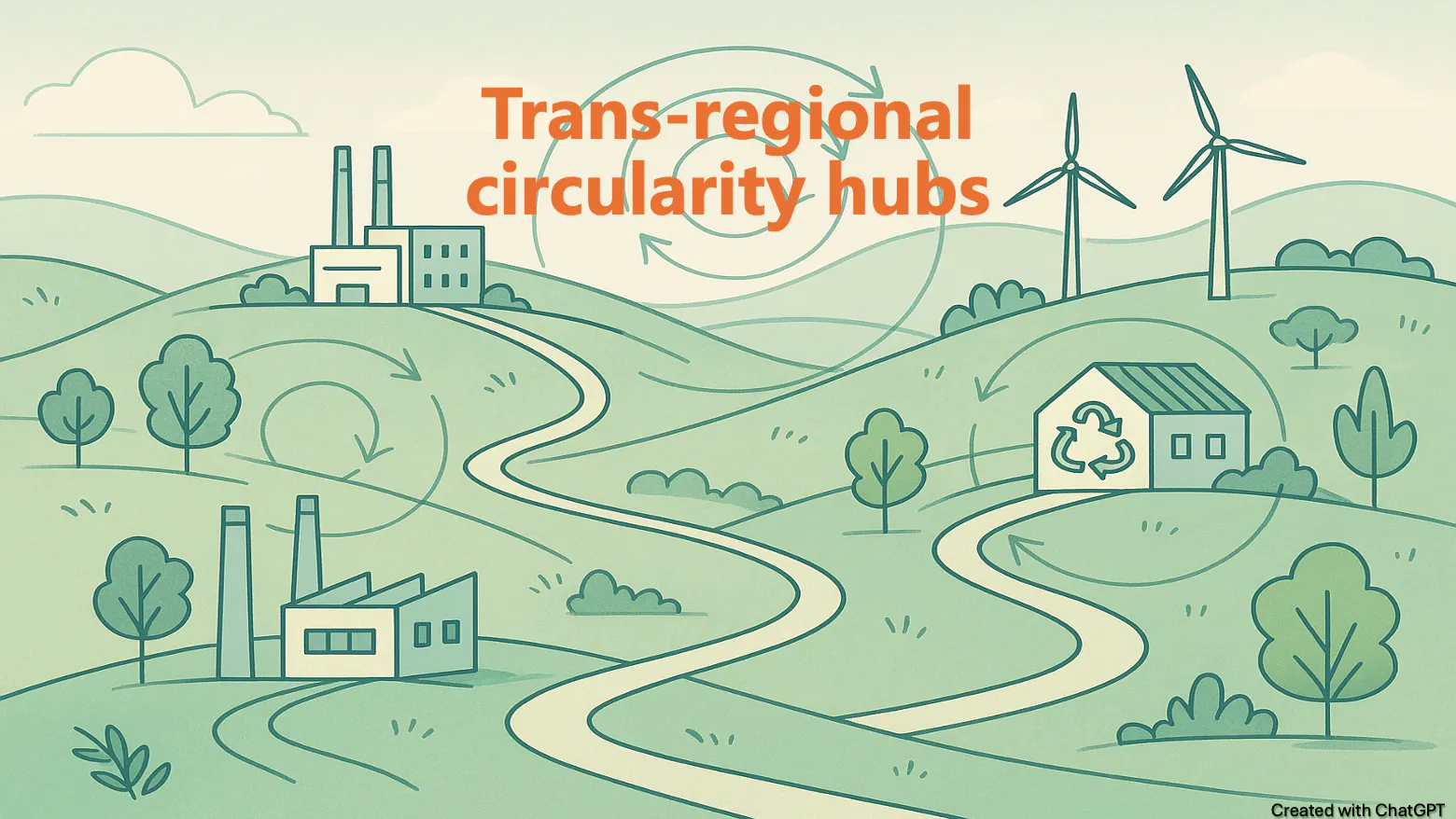Connecting the dots for a greener future: Trans-regional circularity hubs
May 2025

As the EU continues to push for a greener, more resource-efficient economy, new concepts and tools are emerging that reflect both the complexity of this transformation and the need for coordinated action across regions. One such idea that is gaining traction is that of trans-regional circularity hubs, recognising that the challenges and opportunities of the circular economy do not stop at administrative borders and that there is potential in working together across borders. Trans-regional circularity hubs are expected to unlock the potential of circular value chains at scale by connecting industrial, urban and policy actors across regional and national borders. But what exactly are these hubs and how do they fit into the evolving EU policy landscape?
The aim and purpose of trans-regional circularity hubs
The idea of trans-regional circularity hubs has recently come into the spotlight, thanks in part to the Clean Industrial Deal - a strategic initiative under the European Green Deal that aims to align industrial competitiveness with climate neutrality goals. The idea builds on the updated Circular Economy Action Plan (2020) (S'ouvre dans une nouvelle fenêtre), which highlights the importance of systemic change and industrial symbiosis in achieving a climate-neutral, competitive economy by 2050.
For outsiders, it is still not entirely clear what trans-regional circularity hubs could be. The European Commission envisages these hubs in the context of promoting EU-wide cooperation, in particular through groups of Member States and/or industrial actors. This suggests a clear interest in supporting cross-border value chains and shared circular infrastructure across national borders. The EU's role in enabling such hubs lies precisely in its ability to reduce barriers between member states - such as regulatory fragmentation, trade barriers or uneven development. If circularity hubs operated only within a single country, there would be less need for EU-level intervention.
To read this post you'll need to become a member. Members help us fund our work to ensure we can stick around long-term.
See our plans (S'ouvre dans une nouvelle fenêtre)
Déjà membre ? Connexion (S'ouvre dans une nouvelle fenêtre)